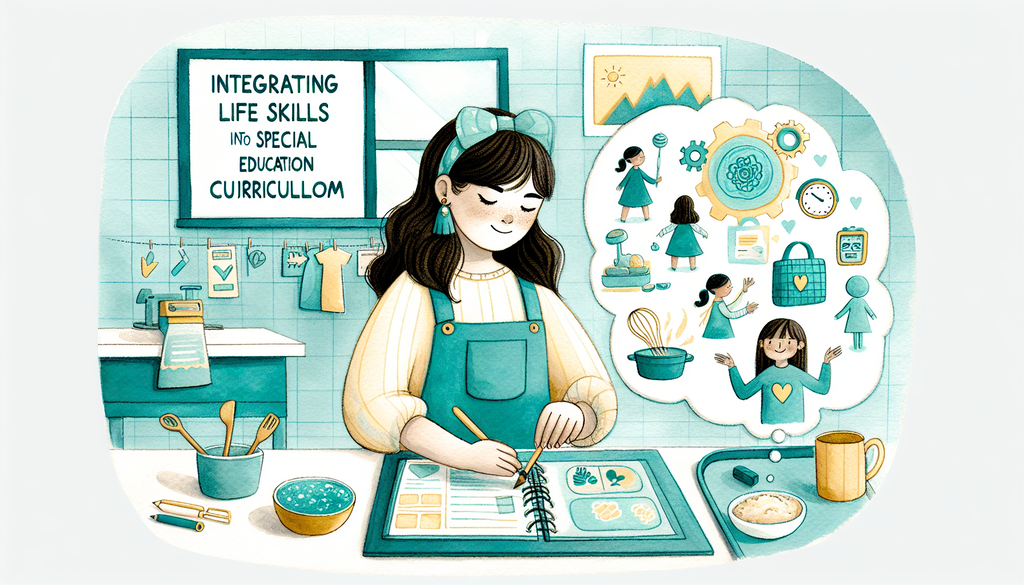Integrating Life Skills into Special Education Curriculum

In a world that often views success through the lens of academic prowess and professional achievement, the importance of practical life skills can often get overshadowed. Yet, for children with special needs or those who are identified as gifted and talented, integrating life skills into the education curriculum can have profound impacts, empowering them to lead independent, confident lives.
Understanding Life Skills
Life skills can be broadly defined as abilities or competencies that enable individuals to handle and adapt to the demands and challenges of everyday life. They range from simple tasks, like dressing oneself and personal hygiene, to more complex skills like problem-solving, decision making, and effective communication.
Also known as practical or functional skills, they may not always be explicitly taught in conventional school settings. However, for children with special needs or those who are gifted, these skills form the backbone of self-sufficiency, and integrating them into their learning becomes even more crucial.
How to Teach Life Skills
To incorporate life skills effectively into special education programs, parents, teachers, and caregivers can consider the following methodologies:
-
Direct instruction: Teach life skills in structured environments using a step-by-step approach. Break big tasks into smaller steps and guide the child through the process. Use visual aids, like communication boards, to complement verbal instructions.
-
Modeling: Demonstrate certain tasks to the child and allow them to learn by observation. It could be simple tasks like tying shoes, or complex tasks like managing money.
-
Role-playing: Engage in simulations or role-playing activities that replicate real-world situations. This allows students to practice the skills they’ve learned in a safe setting.
-
Community-based Learning: Organize field visits to places like libraries, banks, grocery stores, and post offices to provide first-hand experience of using life skills.
-
Repetition and Reinforcement: Regular practice of these skills is critical. Reinforce progress through rewards and positive encouragement.
-
Incorporate the use of technology: From apps that assist with scheduling to interactive games that build problem-solving skills, technology can provide fun, effective support.
Life skills extend beyond the classroom—in fact, the home environment is often the best place for children to practice these skills daily. DIY projects can also provide hands-on experiences where kids can apply what they’re learning in exciting, tangible ways.
The Impact of Life Skills
By focusing on practical life skills, we equip children to navigate the world with greater confidence and independence. But the benefits don’t just stop there. Here’s how teaching life skills can positively impact children:
-
Self-esteem: As children learn to complete tasks independently, their self-confidence grows, fostering a healthy belief in their abilities.
-
Problem-solving: Life skills bring about significant improvement in problem-solving and decision-making abilities, prerequisites for successful adulthood.
-
Social Skills: Integration of life skills teaching also aids in better social interaction and relationships. Whether it’s building friendships or resolving conflicts, these skills play a major role.
-
Resilience: Life skills assist in the development of resilience, helping children deal with failures effectively and bounce back stronger.
Incorporating life skills into the curriculum isn’t limited to special education alone. It’s a necessary element for fostering holistic development in all children. And remember, the goal is progress, not perfection: every small step towards mastery of a life skill represents enormous growth.
Every child has a unique set of abilities and potential, and it’s our role to provide the tools they need to hone this potential and thrive. And while the need to upskill on understanding children’s special requirements is critical, remember, the greatest resources are often love, patience, and belief in their abilities.
When we shift our thinking from “What can’t they do?” to “How can we help them do it?”, we begin to see the transformative power inherent in teaching life skills. The independence that children gain from learning these skills is the cornerstone of their future success, both personally and professionally. Remember to always educate yourself as a caregiver to empower. Let’s prepare our children for the future by focusing on life skills that matter, today!